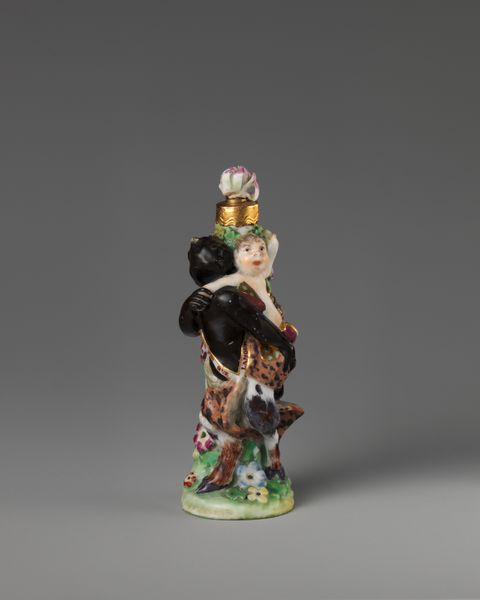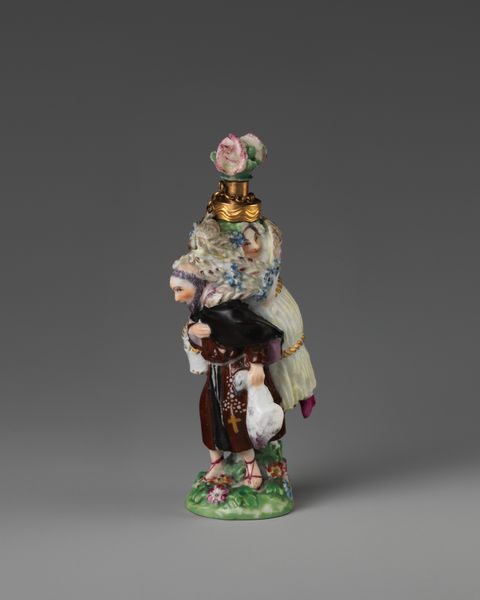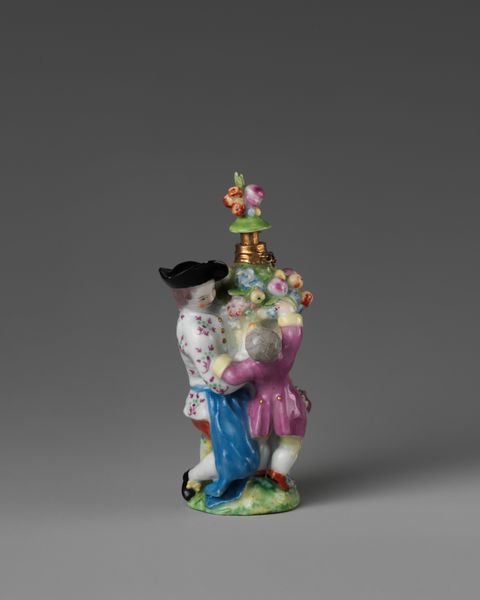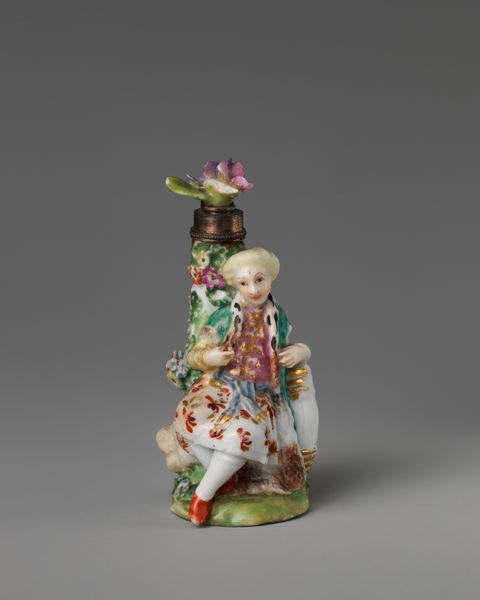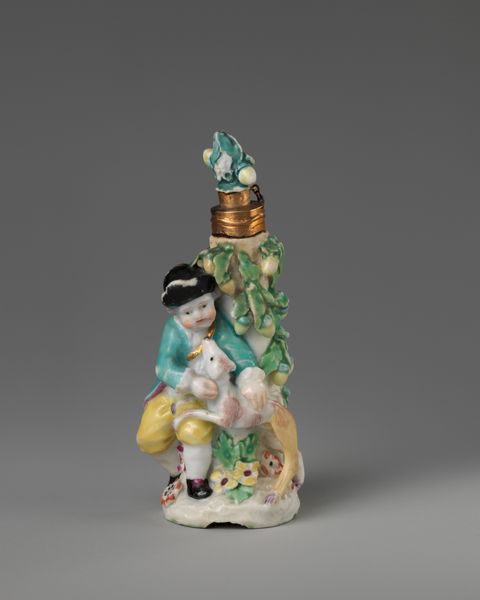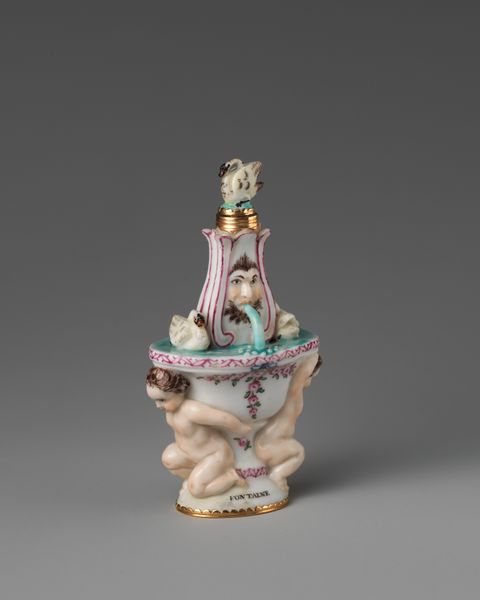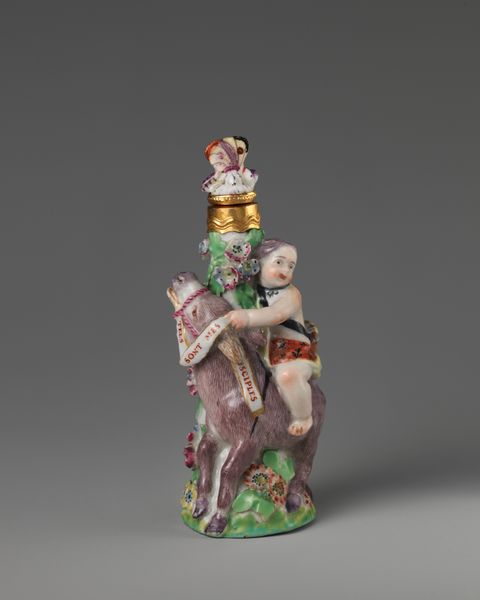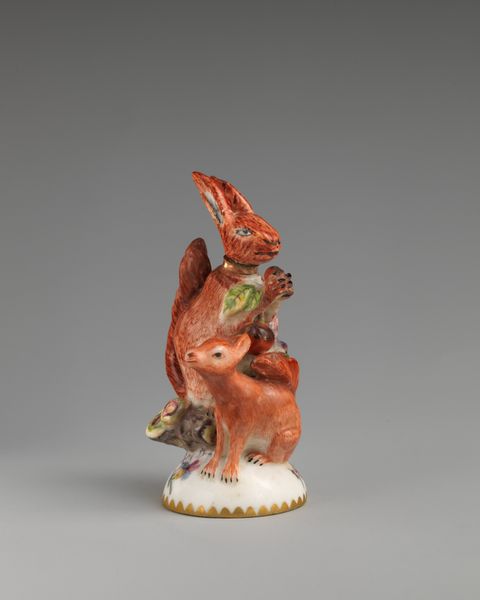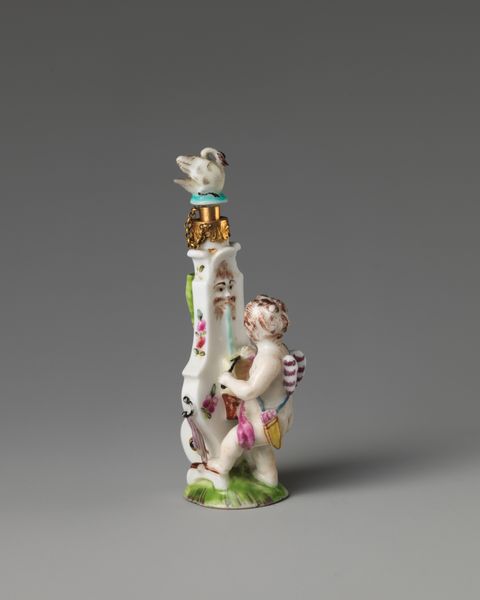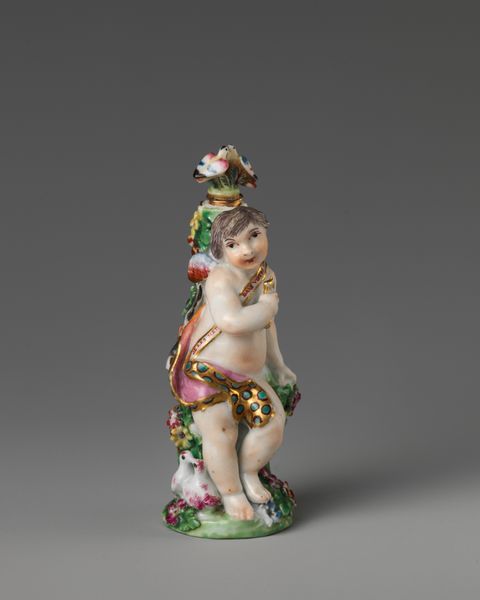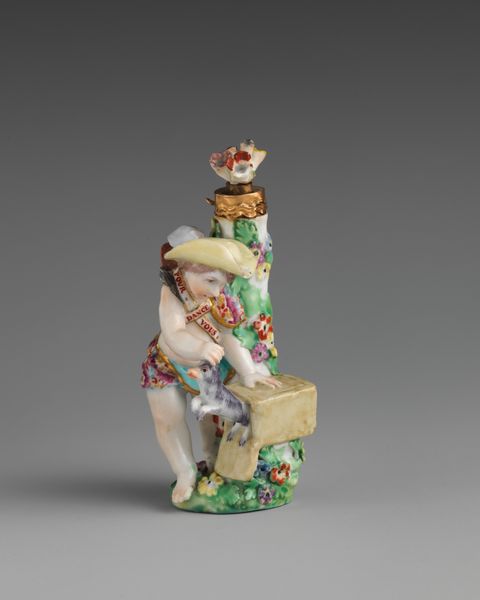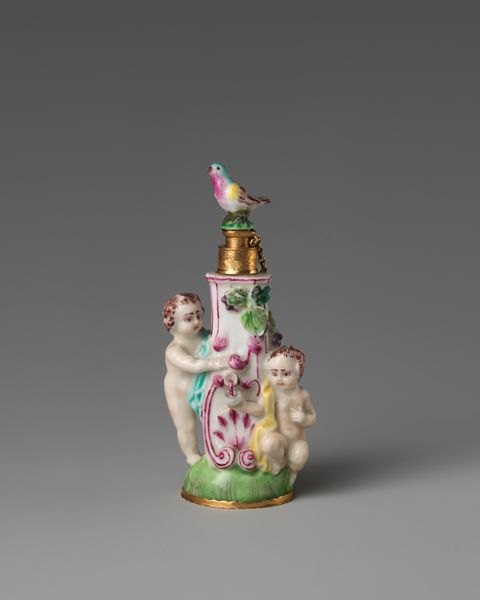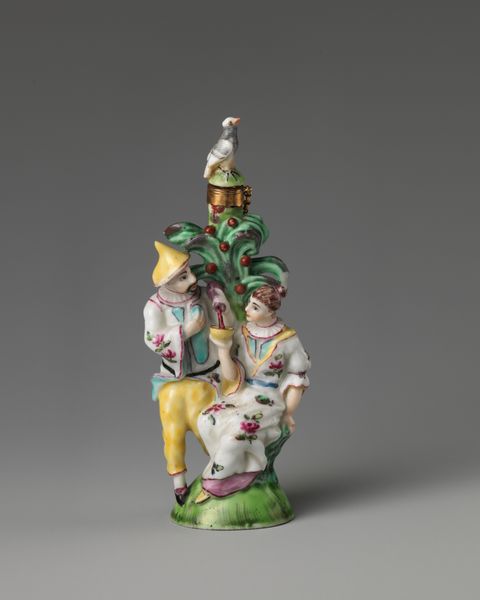
ceramic, porcelain, sculpture
#
ceramic
#
porcelain
#
fruit
#
sculpture
#
decorative-art
#
rococo
Dimensions: Height (with stopper): 2 1/2 in. (6.4 cm)
Copyright: Public Domain
Editor: Here we have a porcelain scent bottle, dating from around 1755 to 1765, made by the Chelsea Porcelain Manufactory. Its shape is quite striking; it resembles a cluster of ripe cherries. What stands out to you when you look at this piece? Curator: What grabs my attention is this interplay between the natural world and aristocratic display. During the Rococo period, there was a fascination with transforming everyday objects into luxury items. This wasn't just about aesthetics; it was about signaling wealth and status through the manipulation of raw materials and the embrace of artifice. Think about the social climate: who had access to these luxurious items, and who was excluded? Editor: That's fascinating. So, the scent bottle isn’t *just* a pretty object; it’s a statement? Curator: Precisely. Consider the labour involved in producing such a delicate piece. Porcelain production was highly specialized and often relied on exploitation, connecting this beautiful object to a darker side of colonialism and class disparity. How does that realization impact your viewing experience? Editor: It definitely complicates my appreciation. Knowing that the creation of this frivolous object had social implications makes me a bit uncomfortable, honestly. Curator: That discomfort is a crucial part of engaging with art history critically. Recognizing these complexities allows us to have a more honest and nuanced understanding of the past and its impact on the present. Editor: I never thought about a scent bottle holding so much social weight. Thanks for expanding my understanding! Curator: My pleasure. Art provides a window into societal values and power dynamics if we’re willing to look critically.
Comments
No comments
Be the first to comment and join the conversation on the ultimate creative platform.
